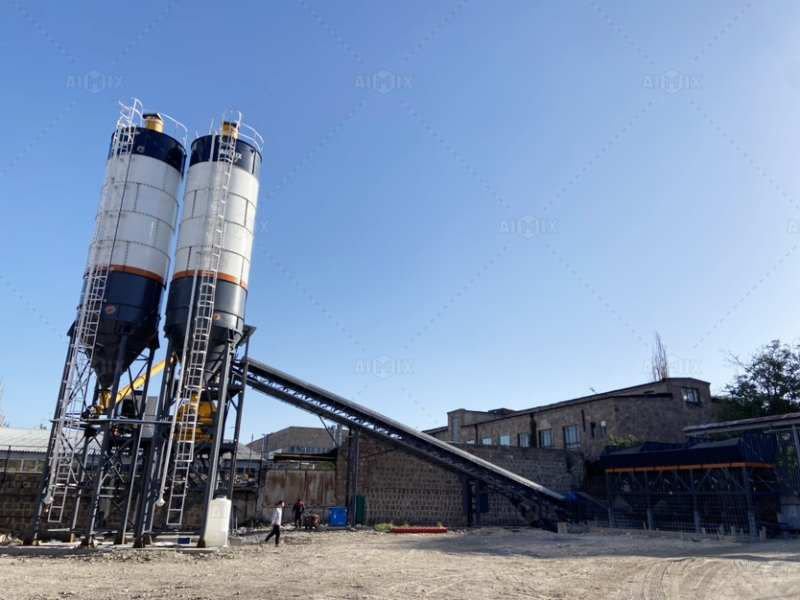Ready Mix Concrete Plant Cost vs. ROI: Maximizing Your Investment
- aimixglobal5
- Nov 4, 2024
- 4 min read
Investing in a ready-mix concrete plant can be a game-changer for construction companies, contractors, and developers. However, understanding the cost and potential return on investment (ROI) is crucial to make the right purchasing decision. By carefully weighing upfront expenses against long-term gains, buyers can maximize their investment and ensure the plant supports their growth and profitability. This article delves into ready mix concrete plants cost, the benefits of a strong ROI, and strategies for achieving it.

Understanding the Costs of a Ready Mix Concrete Plant
A ready-mix concrete plant’s cost can vary significantly based on its size, capacity, and technology. Here are the primary cost factors to consider:
Equipment Costs: The price of a ready-mix concrete plant primarily depends on its capacity, level of automation, and brand. Smaller plants that produce around 30 cubic meters per hour may start at $50,000, while larger plants capable of producing over 100 cubic meters per hour can exceed $500,000. Advanced features, like automatic batching, weighing, and control systems, can further drive up the cost.
Installation and Setup: In addition to the equipment, installation and setup are essential expenses. The plant requires a stable foundation, appropriate electrical work, and sometimes plumbing. Installation costs can range from $10,000 to $100,000 depending on the plant size, local labor rates, and specific site requirements.
Transportation: Moving a ready-mix plant to its designated location can be a substantial cost, especially for larger plants. Transportation fees can range from a few thousand dollars for local shipping to tens of thousands for international shipments.
Maintenance and Repair: Regular maintenance is essential to keep the plant operational and efficient. Maintenance costs can range from 2% to 5% of the plant’s annual operating costs and are essential to prolong the lifespan of the equipment. Downtime due to poor maintenance can negatively impact productivity and ROI.
Operator Training: Modern ready-mix plants often come with complex systems that require skilled operators. Training costs may be necessary if the buyer’s team isn’t familiar with the technology. Some manufacturers include basic training as part of the purchase package, while others offer additional training for an extra fee.
By understanding these costs, companies can calculate the total investment and make informed decisions about plant size, location, and features.
Benefits of Investing in a Ready Mix Concrete Plant
Although the initial cost can be high, owning a ready-mix concrete plant offers numerous benefits that can quickly generate a high ROI.
Reduced Material Costs: By producing concrete on-site, companies can cut down on the cost of buying ready-mix concrete from external suppliers, leading to substantial savings over time.
Improved Quality Control: In-house production allows for greater quality control, leading to a more consistent product that meets specific project requirements. Enhanced quality often translates into better project outcomes, client satisfaction, and repeat business.
Faster Project Completion: Ready-mix plants provide the flexibility to produce concrete whenever needed, reducing delays due to waiting for deliveries. This efficiency is particularly valuable for large projects that require a steady supply of concrete.
Increased Profitability: For companies that regularly use concrete in their projects, producing it in-house leads to long-term cost savings and increased profit margins. By reducing reliance on third-party suppliers, companies can allocate funds more effectively.

Calculating ROI for a Ready Mix Concrete Plant
Return on investment (ROI) is calculated by comparing the net benefits (profits or savings) to the initial investment. Here’s a simplified formula:
ROI=Net Profit or SavingsTotal Investment Cost×100\text{ROI} = \frac{\text{Net Profit or Savings}}{\text{Total Investment Cost}} \times 100ROI=Total Investment CostNet Profit or Savings×100
For example, if a ready-mix plant costs $200,000 and generates $50,000 in annual savings by reducing concrete purchase costs, the ROI over four years would be 100%:
ROI=50,000×4200,000×100=100%\text{ROI} = \frac{50,000 \times 4}{200,000} \times 100 = 100\%ROI=200,00050,000×4×100=100%
An ROI of 100% within 3-5 years is generally considered a strong return for an industrial investment. In addition to savings, companies may generate additional income by selling surplus concrete, further boosting their ROI.
Strategies to Maximize ROI
To maximize ROI, businesses should take strategic steps to reduce costs and increase the plant’s value over time.
Choose the Right Capacity and Features: Buying a rmc plant with too much capacity or too many unnecessary features can lead to wasted investment. Assess current and projected concrete needs to choose the right plant size and technological options.
Implement Preventative Maintenance: Regular maintenance helps prevent costly repairs and unplanned downtime, extending the plant’s operational lifespan and maintaining consistent production levels.
Leverage Automation and Data Analytics: Many modern plants offer automation features that optimize concrete production, reducing labor costs and waste. IoT-enabled plants allow for data collection, making it easier to monitor efficiency and proactively address issues.
Offer Ready-Mix for Sale: Some companies offset the cost of a ready-mix plant by selling concrete to local contractors. This strategy can create an additional revenue stream and improve ROI.
Train and Retain Skilled Operators: Skilled operators ensure the plant runs efficiently and with minimal errors. Offering training and incentives can reduce turnover and improve production reliability.

Long-Term Financial Gains and Productivity Boosts
Although buying a ready-mix concrete plant requires a significant upfront investment, it provides businesses with a reliable, cost-effective concrete supply. Over time, companies can achieve greater profitability by controlling production, ensuring quality, and reducing dependency on suppliers.
In conclusion, the cost of a ready-mix concrete plant is an investment that, when managed well, provides high returns. By balancing initial costs with smart, ROI-boosting practices, companies can maximize the long-term financial gains of this vital asset.







Comments